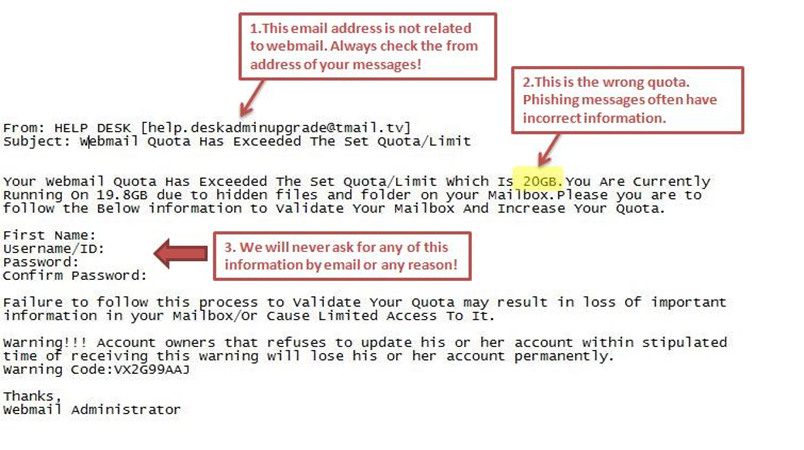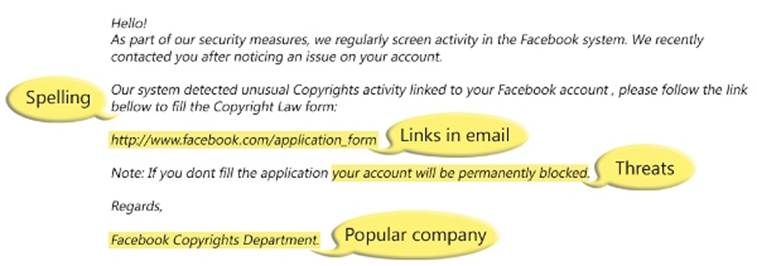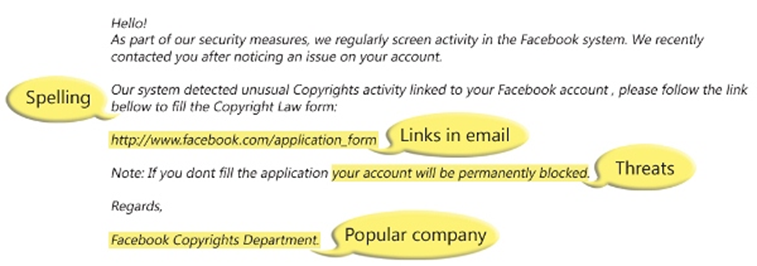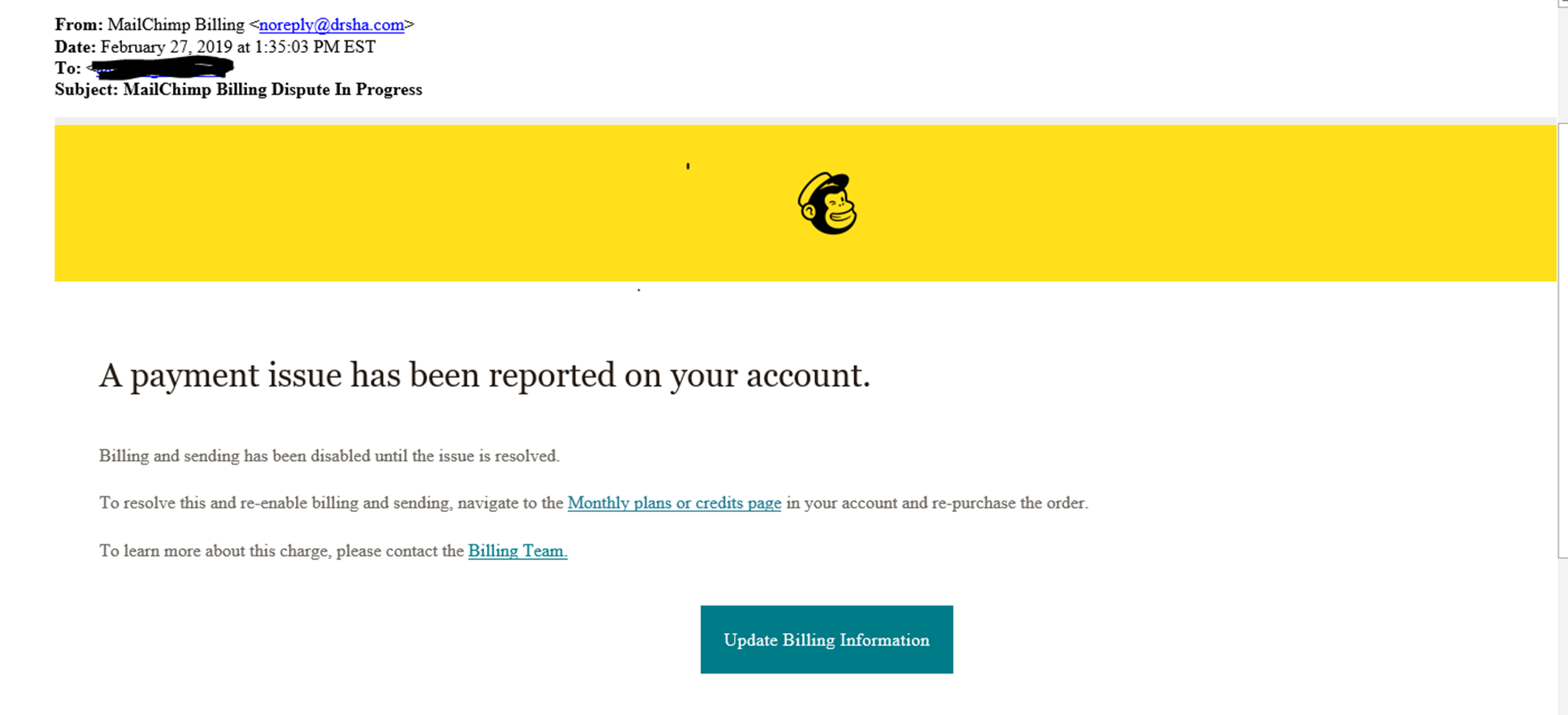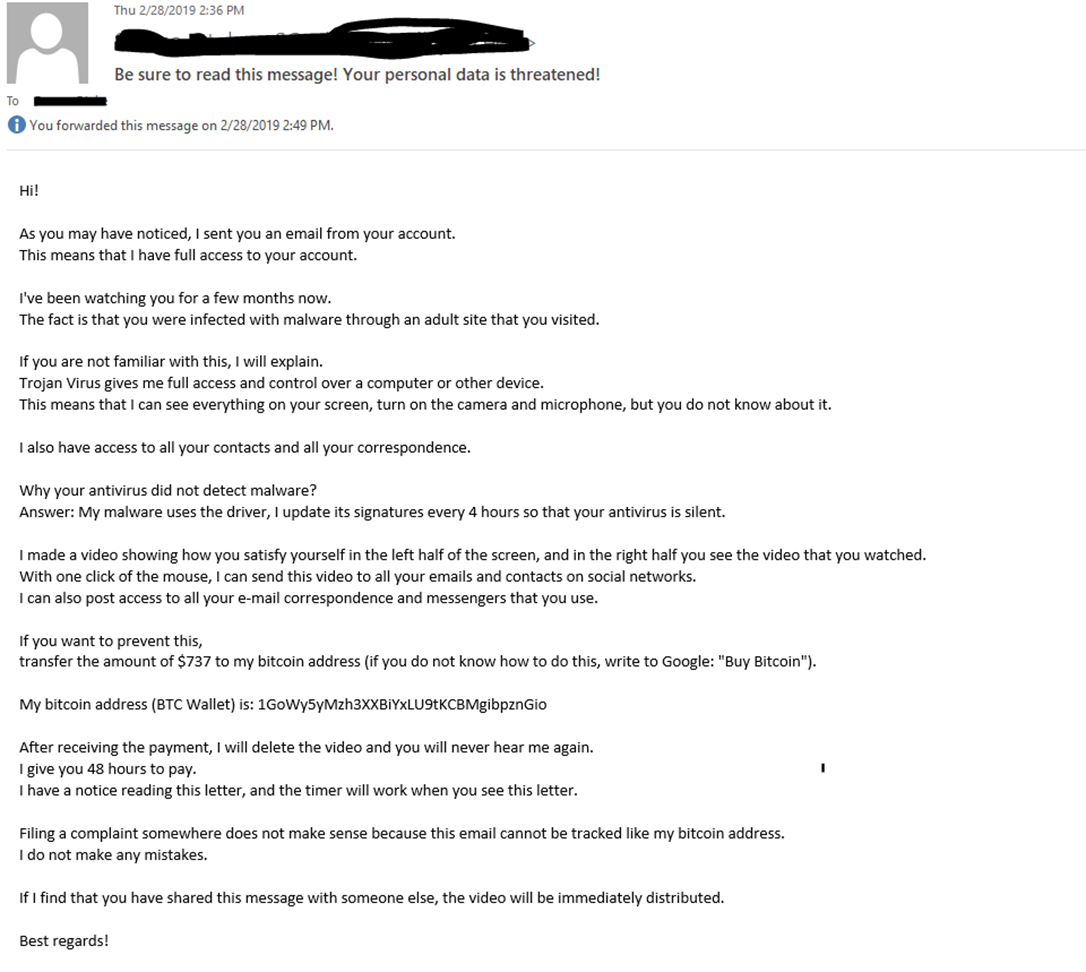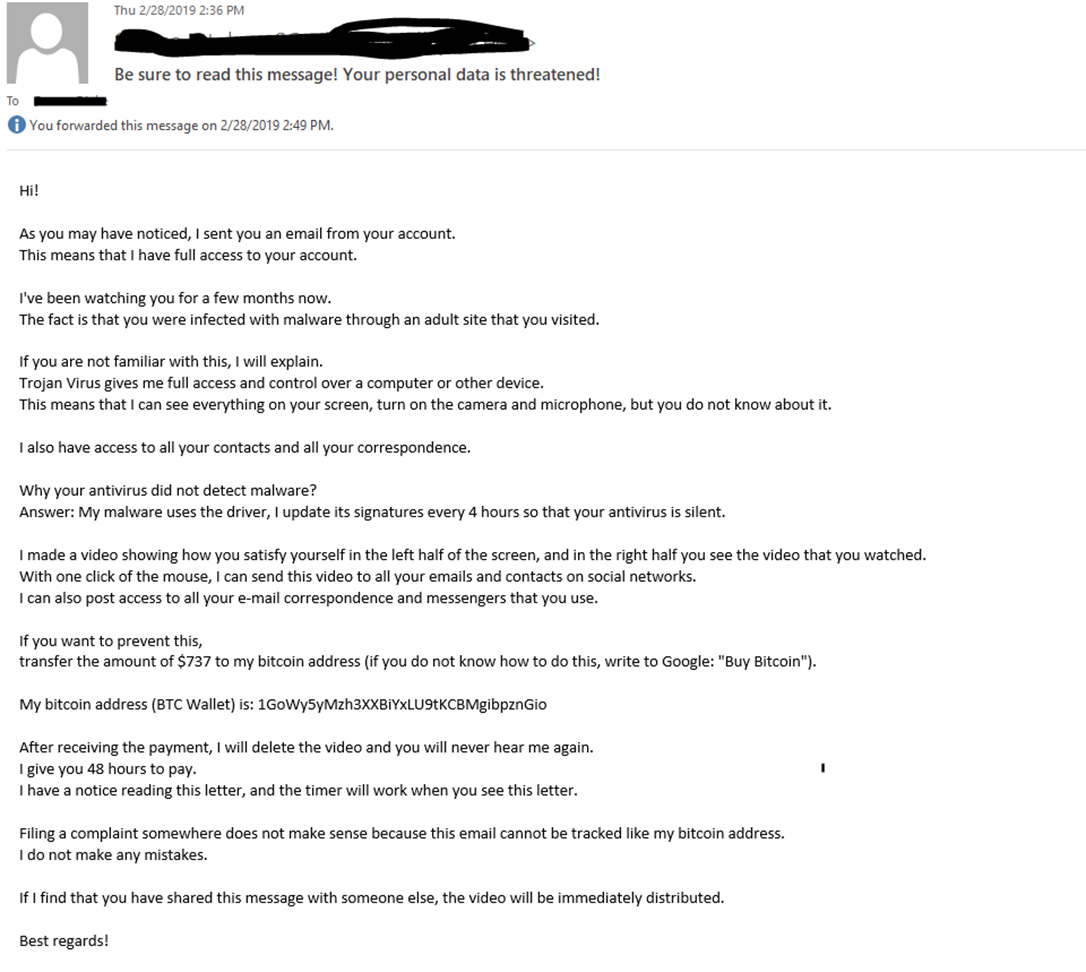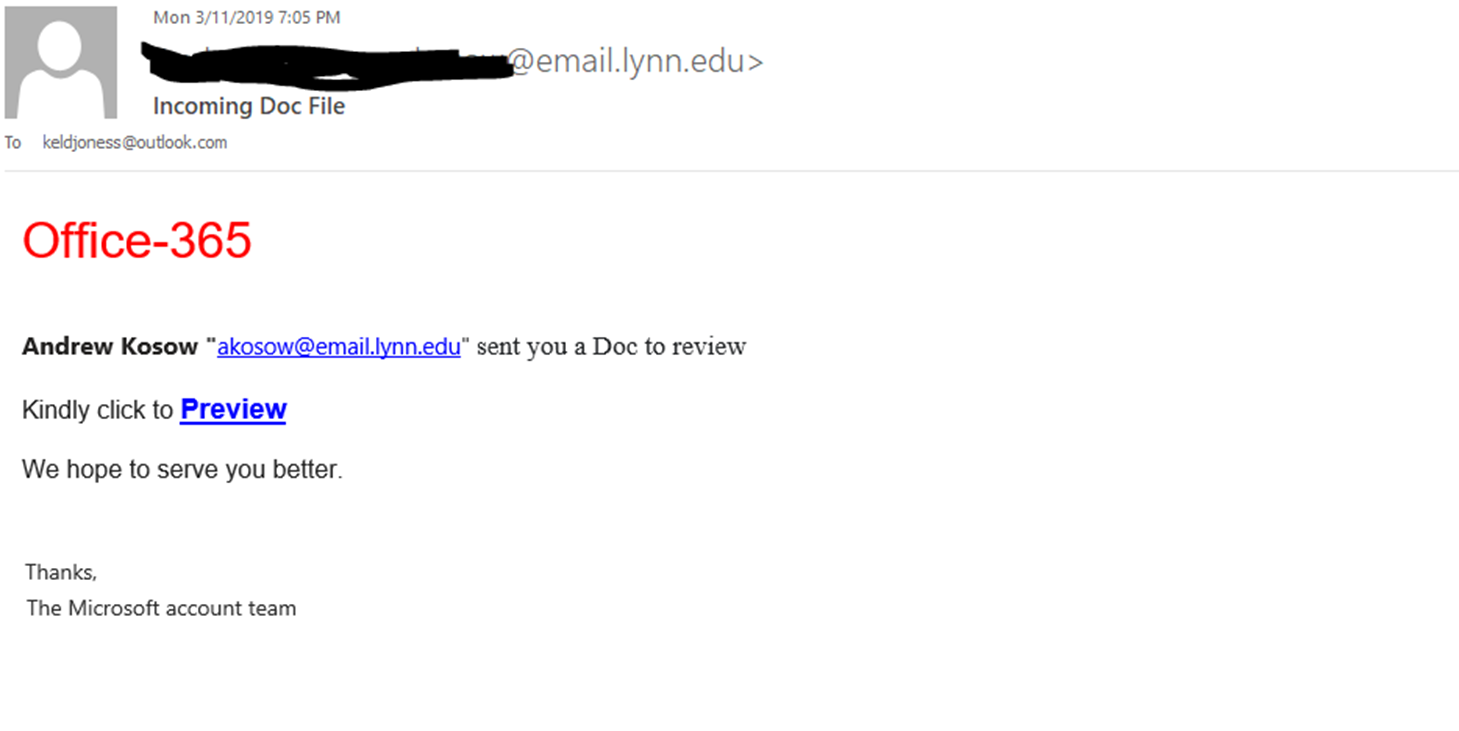Overview
Scammers are always looking for new ways to trick us. These scams can be difficult to detect. Sometimes scammers pose as employers or business associates and try to gain access to your Lynn username and password or your bank account information or other personal information.
You will never be asked:
- You will never be asked:
- to increase/decrease your mailbox size
- to increase/decrease the space on your One Drive or Personal Drive
- to validate or confirm your Lynn login information/credentials
- to update/validate your direct deposit information
Identifying Phishing Email Scams:
- The person communicating with you is not listed on the www.lynn.edu website.
- The person communicating with you via email or text IS listed on the organizations website but the email address from which you receive communications does not match the organization domain name of @lynn.edu.
- The person/organization requests your bank account information to deposit large sums of money into your account.
- The person/organization sends you checks or money and asks you to buy gift cards in exchange.
- There is no face to face (virtual or otherwise) communication.
- The process is rushed or the person/organization asks you to rush.
- There are spelling errors in the body of the senders email
- Unexpected email attachments
- Poor spelling and grammar
- Hyperlinks in email
- A sender’s address that doesn’t match the name
- Request for payment or login information
- Threats
- Spoofing well-known companies
- Too good to be true
- Wording is slightly off.
- Warnings about your account being shut down
- A company logo that looks resized
- Threats of legal action
- Confirmation of shipment that you didn't order
- General salutations not personalized
- Sudden urgency
- Inaccuracies
Do's:
- Verify the sender of a message and call them on the phone if you have to.
- Hover over web page links (URLs) in email messages to see where they link to – beware URL shortening services (like bit.ly) that may obscure the final web site destination.
- Be skeptical of messages with odd spelling/grammar, improper logos or that ask you to upgrade or verify your account.
Don'ts:
- Open attachments from unknown senders.
- Click on a link from an unknown sender.
- Email someone your username or password.
- Email an attachment with sensitive university information that is not encrypted
- Click on a link from an unknown or unexpected sender and then enter your Lynn username and password
What if I clicked the link or responded?
- Change your password immediately
- Call your IT Helpdesk right away
- As for procedures on what to do next
- As your supervisor how to respond
Phishing Email Examples
If you are worried that you may be the victim of a phishing email , notify your bank immediately, alert Campus Safety at 561-237-7226.
